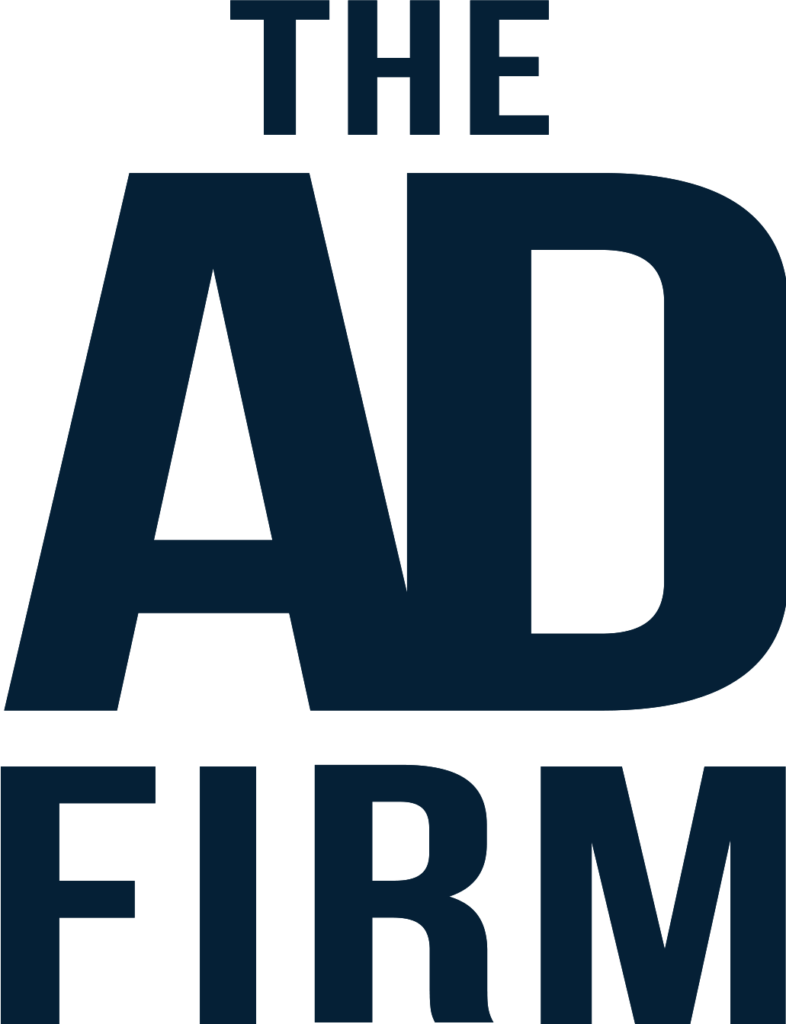The digital world thrives on content, but not all content thrives in the digital world. You’ve probably heard time and time again that quality content is one that engages the readers, offers value, and is well-written. If you’re well-adept in the practices and techniques of creating well-optimized content, then you’re probably already aware that there are a multitude of factors to consider. There’s keyword density, readability, meta descriptions, and more. But how do you measure the quality of your content? This leads to an important question: does content score matter?
What is a Content Score?
A content score is a numerical evaluation, typically ranging from 0 to 100, that assesses the quality of web content with its relevance to specific keywords or topics. This score is calculated using various algorithms and SEO tools, and it takes into account factors like keyword usage, content structure, readability, and originality.
The scoring range for content quality is broadly categorized into three segments:
- 0 – 33 : Indicates irrelevant or low-quality content. Such scores suggest a need for significant improvements in terms of relevance, depth, and engagement.
- 34 – 66 : Represents content that is of decent quality and relevance. This range might include high-quality content that is poorly aligned with target keywords, or content that is highly relevant but lacks depth or quality.
- 67 – 100 : Signifies optimum quality and relevance. Content in this range is typically well-researched, expertly written, and perfectly aligned with the target audience’s search intent and keywords.
How Content Score Works
Understanding how a content score is calculated offers vital insights into crafting content that not only engages readers but also ranks well in search engines. The content score is not a random number; it’s a result of several meticulously analyzed factors:
- Keyword Relevance and Density : This aspect scrutinizes how well the content aligns with targeted keywords. It’s not just about sprinkling keywords throughout the text; it’s about strategically placing them so they appear naturally and are contextually relevant, enhancing both the content’s relevance and readability.
- Content Structure and Readability : A well-structured article is easier to read and understand. This involves using clear headings and subheadings, breaking the content into digestible paragraphs, and ensuring a logical flow of ideas. Readability is not just about simplicity; it’s about delivering information in an accessible manner, making complex topics understandable to a broader audience.
- Quality of Information : High content scores are reserved for content that provides depth, accuracy, and valuable insights. This means going beyond superficial coverage of a topic and delving into detailed analysis, backed by research and data. Quality content not only informs but also adds value to the reader’s knowledge or experience.
- User Engagement Metrics : Search engines gauge how users interact with content. Metrics like the time spent on a page, bounce rates, and the nature of user interactions (such as comments or shares) are indicative of how engaging the content is. High engagement typically correlates with high content scores, as it signals to search engines that the content is valuable and relevant to readers.
- Originality and Uniqueness : In a sea of content, originality stands out. Content that offers unique perspectives or presents information in a novel way is more likely to captivate readers and, consequently, score higher. This doesn’t mean reinventing the wheel with every article, but it does mean offering fresh takes or insights that distinguish your content from the rest.
What Tools Measure Content Score?
Rather than the arduous task of manually comparing your content to top-ranking competitors, these tools automatically analyze and provide insights on keyword density, relevance, and placement. This not only ensures that your content is SEO-optimized but also aligns it more closely with the user’s search intent. We picked our top favorites in no particular order:
RankIQ
RankIQ stands out for its AI-driven keyword research specifically tailored for bloggers. It identifies low-competition, high-traffic keywords and provides concise, actionable optimization tips. What sets RankIQ apart is its library of hand-picked keywords across various niches, allowing users to focus on topics with the best chance of ranking well.
Features include:
- Lowest lowest-priced content optimization tool on the market
- SEO content briefs
- Top keywords according to niche
- Tailored to bloggers and niche businesses
SurferSEO
SurferSEO’s content editor is its crown jewel, providing an in-depth analysis of content based on top-performing Google results. It suggests ideal word counts, keyword density, and even the structure of headings and paragraphs. For SEO-driven content creators and digital marketing agencies , SurferSEO’s data-centric approach offers a detailed roadmap to rank higher, backed by a thorough analysis of current search engine trends.
Features include:
- Suggests “Topics and questions to answer” for in-depth content creation
- Comprehensive analysis of top-ranking Google results
- Intuitive interface with visualized data and optimization suggestions
- Built-in natural language processing (NLP)
- Keyword density feature
- SERP similarity to guide optimization decisions
- Ability to track competitors’ content performance and how you compare
SEMRush
SEMRush offers a comprehensive suite of SEO tools, including a content optimization feature that analyzes content in real-time and suggests improvements. It also provides insights into how well your content is performing compared to competitors, allowing you to fine-tune your strategy for better results.
Features include:
- Real-time analysis of content quality
- Keyword recommendations
- Insights into your content’s performance compared to competitors
- Integration with Google Docs for seamless optimization
NEURONwriter
NEURONwriter is unique for its focus on semantic SEO, using AI to suggest contextually relevant topics and subtopics. This ensures that content isn’t just keyword-optimized but also comprehensive and topical. It’s particularly useful for content creators who want to ensure their articles cover a subject thoroughly and align with search intent.
Features include:
- Advanced content editor
- Content outline builder
- AI writer
- Text paraphraser/expander
- AI content templates
- Optimization suggestions & SEO scoring
- Internal link suggestions
Yoast
Yoast’s real-time content analysis feature provides immediate feedback on keyword optimization, readability, and SEO-friendly structure. It’s highly regarded for its user-friendly approach to SEO, making complex concepts accessible to beginners. Yoast’s wide adoption is a testament to its effectiveness in helping website owners optimize their content without needing deep SEO expertise.
Yoast offers a free version with essential features and a premium version priced at around $89 per year, providing advanced features like internal linking suggestions and content insights.
Features include:
- Keyword density
- Paragraph structure
- Readability analysis
- Detailed SEO insights and suggestions
- Internal linking suggestions
- Content insights based on the keyword(s) entered
Hemmingway and Grammarly:
These two tools are not SEO-specific but are invaluable for improving content quality and readability. They highlight grammatical errors, complex sentence structures, and passive voice usage, providing suggestions to improve overall writing style. Using active voice in SEO content creation is known to be more engaging and easier to read, making tools like Hemmingway and Grammarly essential for creating content that scores well in readability metrics.
Features include:
- Identifying grammatical errors
- Highlighting complex sentence structures
- Suggestions for improving writing style and readability
- Passive voice detection and suggestions for changing to active voice.
What If You Do Not Have Access to an SEO Tool?
Not everyone has access to paid SEO tools, and some may prefer not to use them due to personal preference or budget constraints. However, there are ways to manually assess content for quality without relying on automated tools. Some key factors to consider include:
- Relevance: Is the content relevant and accurate? Does it answer the reader’s query or align with their search intent?
- Readability: Is the content easy to read and understand? Does it use simple language and an active voice?
- Engagement: Does the content capture and maintain the reader’s interest? Are there visual aids, such as images or videos, that enhance engagement?
- Originality: Does the content offer a unique perspective or present information in a fresh, unique way?
- Credibility: Is the information cited from reputable sources? Are there external links to support claims and add value?
- Structure: Is the content well-organized with clear headings, subheadings, and paragraphs? Does it use bullet points or numbered lists for easy scanning?
Google values high-quality, user-friendly content, and manually assessing these factors can help ensure that your content is optimized for both search engines and readers. Additionally, performing keyword research and incorporating relevant keywords naturally throughout the content can also improve its visibility and ranking potential.
The Impact of Content Score on Search Rankings
While a high content score can be indicative of well-optimized and high-quality content, it’s not a guaranteed ticket to top search rankings. Digital marketing companies and SEO experts know this too well, and part of their SEO services and strategies involve creating content that is both relevant and useful to users.
Here are some reasons why:
- Content Quality and Relevance : Search engines like Google prioritize content quality and relevance to the user’s query. A high content score generally reflects well-optimized content that aligns with these factors. This includes the use of relevant keywords, readability, user engagement, and the overall value provided to the reader. When these elements align, it typically boosts the content’s chance of ranking higher.
- Technical SEO Factors : While content score focuses on the quality of the content itself, search rankings are also influenced by technical SEO aspects. This includes site speed, mobile-friendliness, backlinks, and domain authority. High-quality content on a website with poor technical SEO may struggle to rank well.
- Competition and Search Intent : Even with a high content score, the level of competition for certain keywords or topics can impact rankings. Highly competitive niches may require additional efforts beyond content optimization to rank well. Moreover, if the content doesn’t align well with the search intent behind the query, it may not rank, regardless of its content score.
- Algorithm Updates and Changes : Search engine algorithms are constantly evolving. What ranks well today might not rank as well tomorrow, even if the content score remains high. Staying updated with the latest SEO trends and algorithm changes is crucial for maintaining high rankings.
- Content Freshness and Updates : In some niches, the freshness of content can impact rankings. Older content, even if it once had a high content score, may lose ranking over time if not updated to reflect the latest information or trends.
- User Behavior Metrics : Search engines also consider user behavior metrics like click-through rate (CTR), dwell time, and bounce rate. A high content score doesn’t always translate into positive user behavior. For instance, if users consistently click away from the content quickly (high bounce rate), it may negatively impact rankings.
- Content Saturation : In some cases, content can have a high score but still not rank due to saturation in the topic area. If there’s a plethora of high-quality content on the same topic, standing out becomes more challenging, regardless of the content score.
Practical Strategies for Improving Your Content Score
In the quest for a higher content score and better SEO, knowing the right strategies can make all the difference. While the concept of content scoring might seem daunting, several practical methods can elevate your content’s quality and relevance, leading to improved search engine rankings.
Integrating Keywords and Synonyms Naturally
The art of keyword integration lies at the heart of content scoring. It’s not just about quantity but the quality and context in which these keywords are used. The natural integration of keywords and their synonyms throughout your content enhances its relevance without compromising the reading experience. This approach avoids the pitfalls of keyword stuffing, ensuring your content remains engaging and informative while being optimized for search engines.
- Avoid using the exact keyword phrase too often; it can make your content appear spammy and harm readability. Instead, use variations and synonyms to maintain keyword diversity.
- Place keywords in important areas like headings, subheadings, and the first paragraph of your content.
- Incorporate long-tail keywords and phrases that reflect user search intent. Doing so helps target specific queries with a clear intent and can lead to higher conversions.
Enhancing Readability and Engagement
Creating user-friendly content is key to improving your content score. Search engines value well-written, easy-to-understand content that keeps readers engaged. Here are a few tips to achieve this:
- Use short sentences and simple language where possible.
- Active voice makes for more engaging content.
- Break up text into smaller paragraphs and use subheadings to help structure your content better.
- Incorporate visual aids like images, videos, and infographics to break up text and enhance engagement. Visual elements can also make complex concepts easier to understand.
Updating and Refreshing Existing Content
As mentioned earlier, keeping your content updated with the latest information and trends is crucial for maintaining high rankings. Regularly reviewing, refreshing, and updating your existing content can improve its relevance and ranking potential. current
- Conduct regular keyword research to identify new opportunities to optimize existing content.
- Keep an eye on industry trends and updates to ensure your content remains current.
- Monitor user engagement metrics like bounce rate and dwell time to determine which content needs updating or improvement.
Promoting Your Content
Creating high-quality and relevant content is only half the battle; it also needs to reach your target audience. Here are some ways to promote your content and increase its visibility:
- Share your content on social media platforms where your target audience is active.
- Collaborate with influencers or other websites in your niche to reach a wider audience.
- Utilize email marketing to promote your content to subscribers.
- Use paid advertising on search engines and social media platforms for targeted promotion.
By focusing on these areas, you can significantly improve your content’s SEO score, making it more likely to rank well in search engine results.
The Natural Language Processing in Content Scoring
Natural Language Processing (NLP) has become a critical component in content scoring. NLP technologies enable search engines to understand and interpret content more like a human would, considering the context and semantic meaning of words and phrases.
For example, if a user searches for “best restaurants near me,” search engines can now understand that the user is looking for nearby dining options rather than just information about the term “restaurants.” This has led to a shift in SEO practices towards creating more high-quality, relevant, and informative content, rather than solely focusing on keyword optimization.
Adhering To Google’s E-E-AT Guidelines
Google’s E-A-T (Expertise, Authoritativeness, Trustworthiness) guidelines have become a crucial factor in content scoring. Search engines now prioritize content from reputable sources and experts in the field. To improve your content score, it’s essential to adhere to these guidelines:
- Establishing yourself as an expert in your niche through authoritative and well-researched content.
- Building trust with your audience through transparency, credentials, and social proof.
- Providing accurate and reliable information backed by credible sources.
By following these guidelines, you can improve your credibility and authority in the eyes of search engines, leading to a higher content score.
Does Content Score Matter?
As we reach the conclusion of our exploration into the world of content scores and SEO, one thing becomes clear: content score undoubtedly matters. It serves as a vital metric that encapsulates online content’s quality, relevance, and SEO potential. But it’s not the entire picture. Other factors, such as backlinks, site speed, and technical SEO elements, also play a significant role in determining search engine rankings.
Ultimately, creating valuable and user-friendly content should always be the primary goal. By adhering to best practices for improving your content score and keeping up with the latest trends and updates in SEO, you can achieve higher search engine rankings and attract more organic traffic to your website. So, while content scoring may seem like a complex process with ever-changing algorithms and guidelines, its purpose remains simple: to help search engines connect users with the most relevant and valuable content available online.









